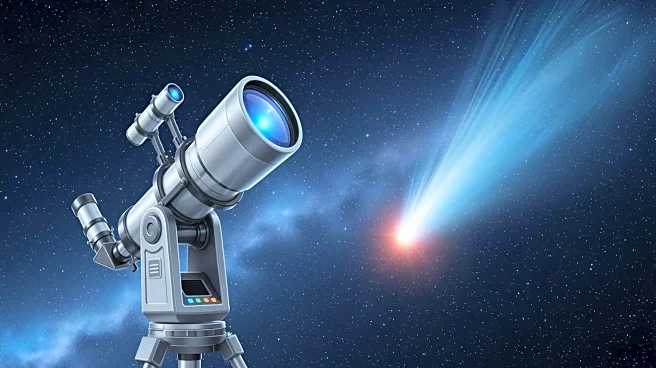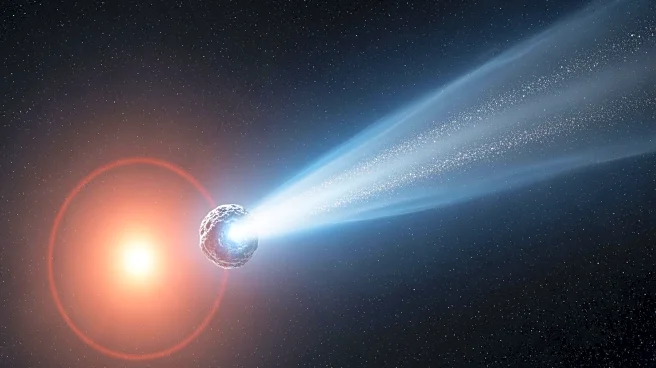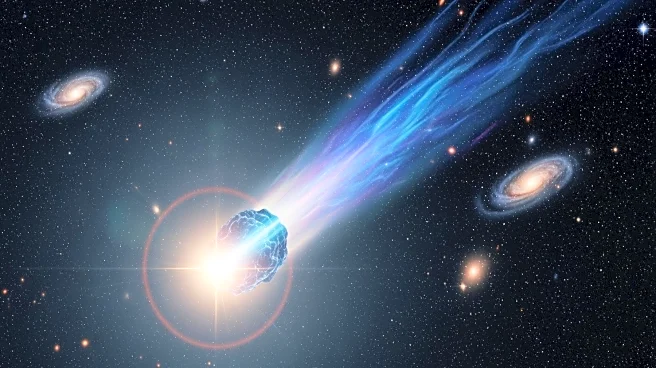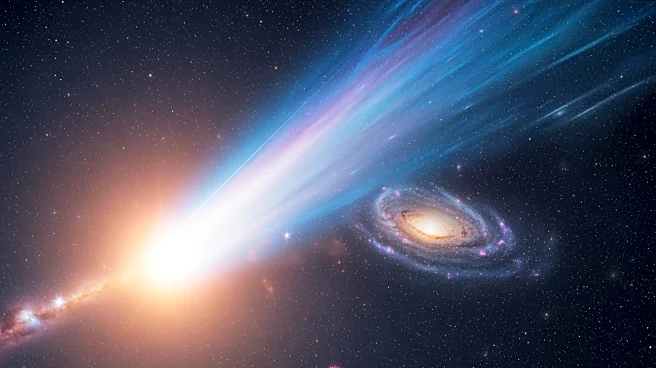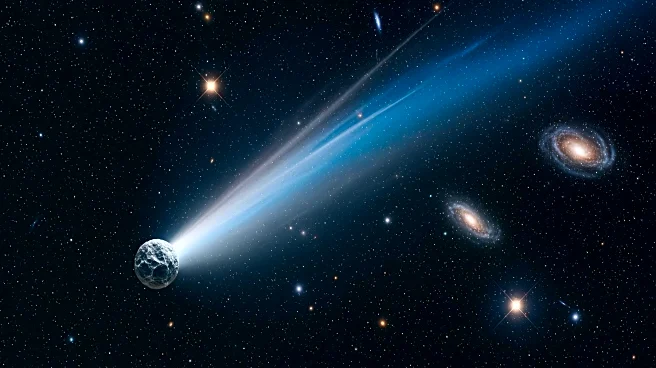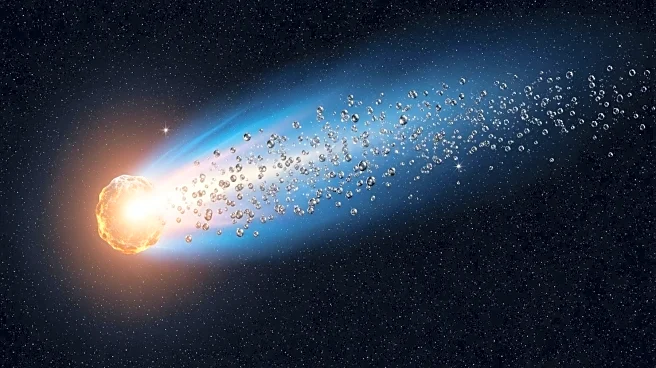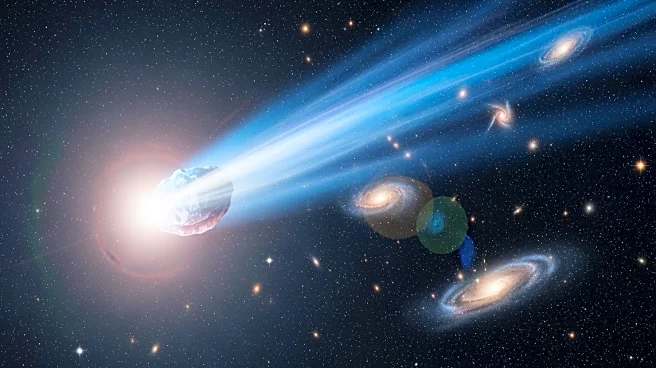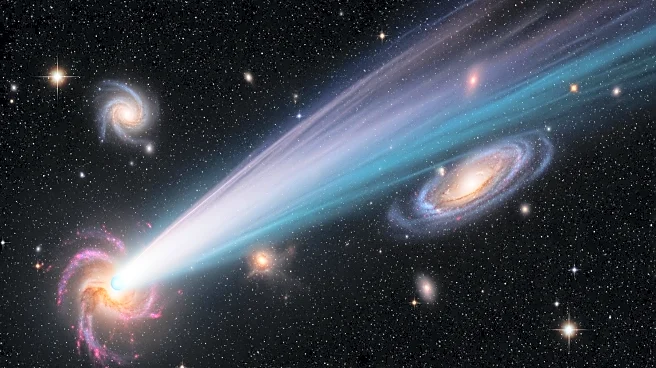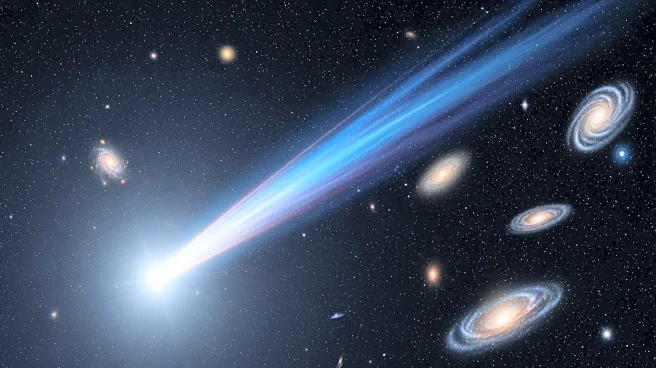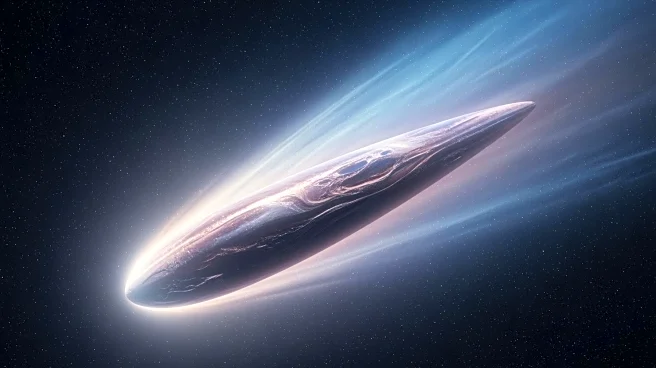What's Happening?
NASA's Swift space telescope has observed the interstellar comet 3I/ATLAS, which is the third known object from beyond our solar system, releasing water at an extraordinary rate. Discovered in July 2025,
the comet is on a hyperbolic trajectory, indicating its interstellar origin. As it approaches the Sun, 3I/ATLAS is releasing water vapor at a rate of 88 pounds per second, akin to a fire hose. This activity is surprising given its distance from the Sun, where water ice typically remains frozen. The comet's large size and brightness have made it easier to study compared to its predecessors, 'Oumuamua and Borisov.
Why It's Important?
The study of 3I/ATLAS provides a rare opportunity to understand the composition and behavior of interstellar objects, which can offer insights into the conditions and materials present in other star systems. The comet's activity and composition, including the presence of carbon dioxide and heavy metals like nickel, challenge existing models of cometary chemistry and suggest that such objects could carry the building blocks of life across the galaxy. This research enhances our understanding of the diversity of planetary systems and the potential for life beyond Earth.
What's Next?
As 3I/ATLAS continues its journey through the solar system, telescopes worldwide, including the Hubble and James Webb Space Telescopes, are observing it to gather more data. Upcoming observations by ESA's JUICE probe and NASA's Psyche spacecraft will provide additional insights into the comet's composition and activity. These efforts represent a global scientific campaign to study this interstellar visitor before it leaves the solar system, offering a once-in-a-lifetime opportunity to learn from an ancient cosmic traveler.
